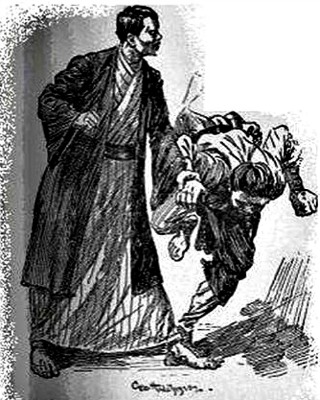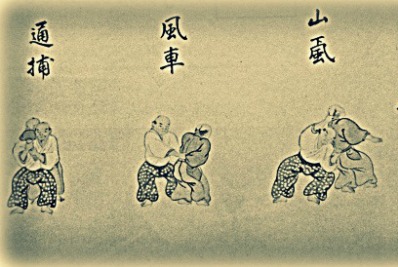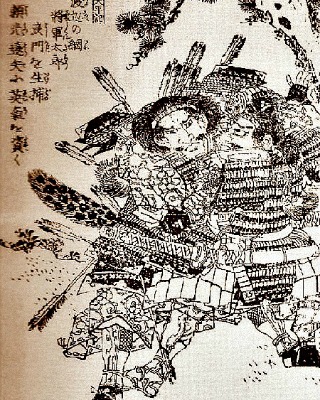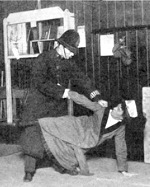Early Jujitsu Ryu
Talk the Talk
A specific style of any Japanese martial art is known as a Ryu, which literally translates to School.
Some of the more important early jujitsu Ryu were founded by masterless samurai, commonly known as Ronin.
Some of the more important early jujitsu Ryu were founded by masterless samurai, commonly known as Ronin.
Walk the Walk
It is interesting to note that while most martial disciplines such as sword fighting, archery, hand-to-hand combat and the use of some type of spear are familiar to most cultures, the development of styles that are designed to use an opponent’s strength and energy against him is unique to Eastern martial arts.
 While elements of the art of jujitsu can be found in Japan’s ancient past, it is widely accepted that the first instant of the martial art being taught in something that closely resembled its modern form was the Takenouchi-Ryu, founded by Takenouchie Hisamori in 1532.
While elements of the art of jujitsu can be found in Japan’s ancient past, it is widely accepted that the first instant of the martial art being taught in something that closely resembled its modern form was the Takenouchi-Ryu, founded by Takenouchie Hisamori in 1532.
When a Chinese priest by the name of Chin Genpin emigrated to the country over a hundred years later, the art developed further with kicks and striking techniques derived from Chinese martial arts being added to the repertoire of the jujitsu fighter.
From the middle of the seventeenth century, the art of jujitsu began to become more systemized and over seven hundred schools would emerge. By this time, they were teaching a combination of throws, wrist locks, grappling moves and strikes using various parts of the body, arms and legs.
Influential Japanese Jujitsu Ryu
The Takenouchi-Ryu - The Takenouchi-Ryu is commonly regarded as the first jujitsu school and was founded in 1532 by Takenouchi Nakatsukasa taifu Hisamori. After seeing his master defeated, he retired to a mountain where he trained for six days and nights with his bokken (wooden sword).Legend has it that on the sixth night, he was awoken by a priest who broke his weapon in two, creating the first kogusoku, daggers that the priest taught Takenouchi to use while fighting in close quarters and while grappling.
The Sekiguchi-Ryu - The Sekiguchi-Ryu incorporates aspects of Japanese jujitsu, kenjutsu (sword fighting), and Iaijutsu (the art of drawing the sword) and was founded by Sekiguchi Yarokuemon Ujimune in around 1640.
The Sousuishitsu-Ryu - The Sousuishitsu-Ryu was founded by Fugatami Hannosuke Mansanori in 1650. It stems from the Takenouchi School but incorporates other martial arts such as Iaijutsu.
The Kito-Ryu - The Kito-Ryu was founded by Fukuno Schichiroemon in the mid-seventeenth century and emphasised the use of throwing techniques (nage-waza) and the practice of set forms (kata). Fukuno was a former samurai who was one of Chin Genpin’s top students before he opened up his own school.
The Jikishin-Ryu - The Jikishin-Ryu, founded by Terada Kanemon, had close ties to the Kito School and the two masters were great friends. The two systems are the oldest known systems of what can clearly be called Japanese jujitsu though many more would soon follow.
The Kiushin-Ryu - The Kiushin-Ryu was probably an offshoot of the Kito school though the date of its inception is unclear. It was founded by Inugami Nagakatsu though his grandson, Inugami Genpin, is often credited as being the master who made the school successful.
The Yoshin-Ryu - The Yoshin System was founded by Yoshin Miura who believed that many illnesses were brought on by improper use of the mind and body. He developed a number of jujitsu training methods that involved arresting devices, which he perfected by studying two of his senior students which led to the development of fifty-one arresting methods.
Miura was another student of Chin Genpin who had taught him at the Kokushij Temple after he had become a masterless samurai or a Ronin. The Yoshin-Ryu was further developed by Akiyama Yoshitoki, a physician from Nagasaki (pictured above). After losing many students who felt the style was boring due to its limited number of moves, he retreated to the Tenmangu Shrine for one hundred days. While there, he developed three hundred and three techniques of his own and is said to have developed new ones any time he felt annoyed or unsatisfied with the art.
The Tenjin-Shinyo-Ryu - The Tenjin-Shinyo-Ryu was founded by a student of Yoshin Miura called Matayemon Iso. After several years of study, he set out on a form of warrior pilgrimage known as Musha shugyo to challenge the best jujitsu fighters in the country. The fact that he won all his fights gave him the notoriety he needed to open up his own school. (Techniques from the Tenjin-Shinyo-Ryu are depicted below.)
Many other schools emerged beside the ones listed above, each bringing its own unique attributes to jujitsu. When the art was introduced to the West in the nineteenth century, the number of variant styles increased further and today, jujitsu is practiced all over the world both as a martial art and as a combat sport.
Written by Andrew Griffiths – Last updated 17/06/2023. If you like
what you see, consider following the History of Fighting on social media.
Further Reading:
Burgin, G. B. [Internet]. 2003. Japanese Fighting: Self-Defence By Sleight Of Body. Electronic Journals of Martial Arts and Sciences. Available from: http://ejmas.com/jcs/jcsart_burgin_1203.htm [Accessed October 31, 2013].Helm, D. [Internet]. 2010. The rise and fall of Jujitsu before the Imperial Ordinance of 1871. The United States Ju-Jitsu Federation. Available from http://www.usjjf.org/articles/jujitsuP1.htm [Accessed October 31, 2013].
Konradsen, K. [Internet]. 2009. The Martial Arts List. Martial Arts of the World. Available from: http://www.maotw.com/list/ma01.html [Accessed October 31, 2013].
Takenouchi Ryu History. [Internet]. 2013. The Official Website of the Takenouchi Ryu. Available from: http://www.takenouchiryu.com/History/ [Accessed October 31, 2013].
More Jujitsu History
Jujitsu History Home
An overview of the history of jujitsu, from use by samurai warriors to its development as an art in its own right from the 16th century. The article also charts the further secret development of the art from the mid-19th century when martial arts were largely criminalised until the early 1950s, when jujitsu once again flourished in Japan.
An overview of the history of jujitsu, from use by samurai warriors to its development as an art in its own right from the 16th century. The article also charts the further secret development of the art from the mid-19th century when martial arts were largely criminalised until the early 1950s, when jujitsu once again flourished in Japan.
Edith Garrud - The Suffragette Jujitsu Teacher
Edith Garrud was a pioneer in British jujitsu history, becoming one of the first female martial arts instructors in the Western World. She used her skills in jujitsu to help the suffragettes in their fight to gain the vote for women, not only by protecting the movement’s leaders , but also by training others to do so when she became the instructor of a unit of suffragettes known as the Bodyguard.
Edith Garrud was a pioneer in British jujitsu history, becoming one of the first female martial arts instructors in the Western World. She used her skills in jujitsu to help the suffragettes in their fight to gain the vote for women, not only by protecting the movement’s leaders , but also by training others to do so when she became the instructor of a unit of suffragettes known as the Bodyguard.
The images on this site are believed to be in the public domain, however, if any mistakes have been made and your copyright or intellectual rights have been breeched, please contact andrew@articlesonhistory.com.



